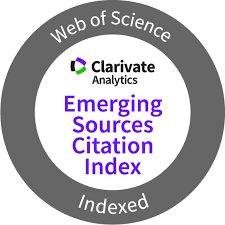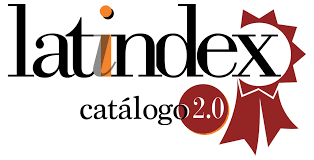Outcomes en la evaluación de las relaciones públicas, la aproximación semiótica / Outcomes in the evaluation of public relations, the semiotic approach
DOI:
https://doi.org/10.5783/revrrpp.v9i18.612Keywords:
Relaciones públicas, outputs, outcomes, evaluación, análisis del discurso, semióticaAbstract
La evaluación de las relaciones públicas es una actividad de primer orden cuyo objetivo es comprender si esta función ha alcanzado la efectividad pretendida. Pese a que el mundo académico ofrece modelos de evaluación, en la actualidad el análisis de los resultados obtenidos sigue estando más centrado en datos relacionados con la cobertura que genera las relaciones públicas olvidando la verdadera influencia que espera alcanzar.
Existe un consenso generalizado sobre la importancia que tiene medir los verdaderos resultados que se extraen de las acciones de relaciones públicas. Estos datos se conocen como outcomes y resulta muy complejo encontrar ejemplos reales y concretos sobre su medición o cuantificación.
Este artículo espera ofrecer una opción para el estudio de outcomes basado en la combinación de análisis del discurso y de la semiótica.
Palabras clave: Relaciones públicas, outputs, outcomes, evaluación, análisis del discurso, semiótica
Abstract
Evaluation of public relations is a major activity whose goal is to understand whether this function has reached the intended effectiveness. Although the academic world offers evaluation models nowadays still common to analyze results with data obtained by the coverage generated by public relations, forgetting the true influence that it hopes to reach.
Authors such as MacNamara and Gregory (2018) have analyzed the evaluation models of strategic communication focusing on the final results that are the objective of the communication actions. On the other hand, institutions such as the AMEC have formulated in their frameworks the differences that exist between the coverage obtained (outputs) and the changes achieved (outcomes).
Therefore there is a general consensus on the importance of measuring the true influence of public relations actions. These data are known as outcomes and it is very difficult to find real and concrete examples of their measurement or quantification. This situation is due to the fact that institutions dedicated to measuring and evaluating communication avoid explaining in detail the methods they use to assess the achievement of objectives in the actions they implement.
This article hopes to offer an option for the study of outcomes through the combination of discourse analysis and semiotics. On the one hand, discourse analysis is a qualitative research method that aims to extract relevant information from a contextual perspective. On the other hand, semiotics is a discipline with a broad vision oriented to the comprehension of messages. Within this line the use of a technique known as semiotic square allows to show the tensions in the meanings related to a brand or organization.
The application of the discourse analysis and the semiotic square could allow interpreting the changes in the coverage generated by the communication actions of the organizations. This would be possible by applying an observation before the exposition and another after the application of the necessary communication actions that promote the values intended by the organization. The free change of the values that are associated to an organization can be a vital element to improve its media positioning in its business.
For example, Exxon implemented actions for the benefit of the environment following the rejection of its shareholders' meeting. The owners of the company criticized that the organization was being mismanaged for not taking into account the climate risk. The success of these actions is measurable both quantitatively and qualitatively by providing an outcome whose intensity can achieve shareholder acceptance. The change of meanings associated with Exxon may represent the approval of management by the real owners. In this small test the semiotic square measurement indicated the change from pro-contaminant and non-sustainable to anti-pollutant and non-sustainable values, and invites for more ambitious research.
Applying a case study, this research shows the possible use of two tools not valued until now. The combination of discourse analysis and semiotic square can be a great help for the interpretation of the results generated by concrete public relations policies within the strategic communication of an organization.
Keywords
Public relations, outputs, outcomes, evaluation, discourse analysis, semiotics
Downloads
References
ABELL, J. [et al.] (2008). Qualitative discourse analysis in the social sciences. Nueva York: Palgrave Macmillan. https://doi.org/10.1007/978-1-137-04798-4
ARGENTI, P. A., HOWELL, R. A. y BECK, K. A. (2005). The strategic communication imperative. MIT Sloan management review, 46(3), 83-89. https://www.researchgate.net/publication/252084158_The_Strategic_Communication_Imperative
AUSTIN, E. W. y PINKLETON, B. E. (2015). Strategic public relations management: Planning and managing effective communication campaigns. Londres: Routledge. https://doi.org/10.4324/9781315754833
BALDERRAMA, L. S. (2008). El esquema actancial explicado. Punto Cero, 13(16), 91-97. https://www.redalyc.org/pdf/4218/421839608011.pdf
BIGNELL, J. (2002). Media semiotics: An introduction. Manchester: Manchester University Press.
BLANCO, D. (1985). Posibilidades y límites de la semiótica. Chasqui. Revista Latinoamericana de Comunicación, (15), 14-20. http://www.revistachasqui.org/index.php/chasqui/article/view/1799
BOTAN, C. H. y SOTO, F. (1998). A semiotic approach to the internal functioning of publics: Implications for strategic communication and public relations. Public relations review, 24(1), 21-44. https://doi.org/10.1016/s0363-8111(98)80018-0
BUHMANN, A. y BRØNN, P. S. (2018). Applying Ajzen’s theory of planned behavior to predict practitioners’ intentions to measure and evaluate communication outcomes. Corporate Communications: An International Journal, 23(3), 377-391. https://doi.org/10.1108/ccij-11-2017-0107
CHANDLER, D. (2007). Semiotics: the basics. Nueva York: Routledge. https://doi.org/10.4324/9780203014936
CHARAUDEAU, P. (1995). Une analyse sémiolinguistique du discours. Langages, 29(117), 96-111. https://dx.doi.org/10.3406/lgge.1995.1708
CARROLL, A. B. (1991). The pyramid of corporate social responsibility: Toward the moral management of organizational stakeholders. Business horizons, 34(4), 39-48. https://doi.org/10.1016/0007-6813(91)90005-g
CASTILLO ESPARCIA, A. (2010). Introducción a las relaciones públicas. España, Instituto de Investigación en Relaciones Públicas. https://www.uma.es/media/files/libropr_1.pdf
CINICI, M. C. y DUNBAR, R. L. (2012). Semiotic methods and the meaning of strategy in firm annual reports. Handbook of research on competitive strategy, 397. https://doi.org/10.4337/9780857938688.00028
CODINA, L. (2018). Revisiones bibliográficas sistematizadas: procedimientos generales y Framework para ciencias humanas y sociales. Barcelona: UPF. https://www.lluiscodina.com/revisiones-sistematizadas-fundamentos/
COLLANTES, X. R. (2000). Retórica creativa: programas de ideación publicitaria (Vol. 7). València : UV.
CORNELISSEN, J. P. (2008). The International Encyclopedia of Communication. https://doi.org/10.1002/9781405186407.wbiecc143
CRONQVIST, H. y FAHLENBRACH, R. (2008). Large shareholders and corporate policies. The Review of Financial Studies, 22(10), 3941-3976. https://doi.org/10.1093/rfs/hhn093
DALLERA, O. y ZECCHETTO, V. (2008). Seis semiólogos en busca del lector. Buenos Aires: La Crujía
DAYMON, C. y HOLLOWAY, I. (2010). Qualitative research methods in public relations and marketing communications. Londres: Routledge. https://doi.org/10.4324/9780203846544
FIOL, CM. (1989). ‘A semiotic analysis of corporate language: organizational boundaries and joint venturing’. Administrative Science Quarterly, 34, 277–303. https://doi.org/10.2307/2989899
FREEMAN, R. E. y REED, D. L. (1983). Stockholders and stakeholders: A new perspective on corporate governance. California management review, 25(3), 88-106. https://doi.org/10.2307/41165018
FREEMAN, R. E. (2010). Strategic management: A stakeholder approach. Cambridge: Cambridge university press. https://doi.org/10.1017/cbo9781139192675.003
GARCÍA CONTTO, J. D. (2011). Manual de semiótica: semiótica narrativa, con aplicaciones de análisis en comunicaciones. Universidad de Lima. IDIC. http://repositorio.ulima.edu.pe/handle/ulima/3775
GREGORY, A. (2001). Public relations and evaluation: does the reality match the rhetoric? Journal of Marketing Communications, 7(3), 171-189. https://doi.org/10.1080/13527260010010778
GREIMAS, A. J. y COURTÉS, J. (1990) Semiótica. Diccionario razonado de teoría del lenguaje. Madrid: Gredos
GRUNIG, J. E. (2013). Furnishing the Edifice: Ongoing Research on Public Relations as a Strategic Management Function. Public Relations and Communication Management, 18(2), 41-66. https://doi.org/10.1207/s1532754xjprr1802_5
HALLAHAN, K. [et al.] (2007). Defining strategic communication. International journal of strategic communication, 1(1), 3-35. https://doi.org/10.1080/15531180701285244
HÉBERT, L. (2006). The semiotic square. Signo. http://www.signosemio.com/greimas/semiotic-square.asp
HERRERA, Y. M. y BRAUMOELLER, B. F. (2004). Symposium: Discourse and content analysis. Qualitative Methods, 2(1), 15-19. https://doi.org/10.5281/zenodo.998653
HON, L. C. (1998). Demonstrating effectiveness in public relations: Goals, objectives, and evaluation. Journal of Public Relations Research, 10(2), 103–135. https://doi.org/10.1207/s1532754xjprr1002_02
INGENHOFF, D. y BUHMANN, A. (2016). Advancing PR measurement and evaluation. Public Relations Review, 42(3), 418-431. https://doi.org/10.1016/j.pubrev.2015.11.010
LEE, S. Y., PARK, Y. S. y KLASSEN, R. D. (2015). Market responses to firms' voluntary climate change information disclosure and carbon communication. Corporate Social Responsibility and Environmental Management, 22(1), 1-12. https://doi.org/10.1002/csr.1321
LINDENMANN, W. K. (1998). Only PR outcomes count—That is the real bottom line. Journal of Communication Management, 3(1), 66-73. https://doi.org/10.1108/eb023485
LÓPEZ, D. B. (1985). Posibilidades y límites de la semiótica. Chasqui: Revista Latinoamericana de Comunicación, (15), 14-20. https://dialnet.unirioja.es/servlet/articulo?codigo=5791747
MACKEY, S. (2006). Misuse of the term ‘stakeholder’in public relations. PRism, 4(1), 1-15. http://citeseerx.ist.psu.edu/viewdoc/download?doi=10.1.1.462.9075&rep=rep1&type=pdf
MACNAMARA, J. (2005). Media content analysis: Its uses, benefits and best practice methodology. Asia Pacific Public Relations Journal, 6(1), 1. https://amecorg.com/wp-content/uploads/2011/10/Media-Content-Analysis-Paper.pdf
MACNAMARA, J. (2006). Advertising values to measure PR: Why they are invalid. NSW Australia: Archipelago Press. https://amecorg.com/wp-content/uploads/2011/10/Ad-Values-to-Measure-PR-Paper.pdf
MACNAMARA, J. (2018). A Review of New Evaluation Models for Strategic Communication: Progress and Gaps. International Journal of Strategic Communication, 12(2), 180-195. https://doi.org/10.1080/1553118x.2018.1428978
MACNAMARA, J. y GREGORY, A. (2018). Expanding evaluation to progress strategic communication: Beyond message tracking to open listening. International Journal of Strategic Communication, 12(4), 469-486. https://doi.org/10.1080/1553118x.2018.1450255
MACNAMARA, J. R. y LIKELY, F. (2017). Revisiting the disciplinary home of evaluation. https://www.instituteforpr.org/wp-content/uploads/Revisiting-the-Disciplinary-Home-of-Evaluation-New-Perspectives-to-Inform-PR-Evaluation-Standards.pdf
MICHAELSON, D. y STACKS, D. W. (2011). Standardization in public relations measurement and evaluation. Public Relations Journal, 5(2), 1-22. https://prjournal.instituteforpr.org/wp-content/uploads/Standardization.pdf
MICK, D.G [et al.] (2004) Pursuing the meaning of meaning in the commercial world: An international review of marketing and consumer research founded on semiotics. Semiotica, 152(1/4), 1–74. https://doi.org/10.1515/semi.2004.2004.152-1-4.1
MITROFF, I. I. y ANAGNOS, G. (2001). Managing crisis before they happen. Nueva York: AMACOM.
NEUENDORF, K. A. (2004). Content analysis: A contrast and complement to discourse analysis. Qualitative Methods Newsletter, 2(1), 33–36. https://doi.org/10.5281/zenodo.998700
PARÍS, J. A. (2017). Aplicación del cuadrado de Greimas a los cuatro aspectos esenciales del marketing. Poliantea, 11(21), 61-102. https://doi.org/10.15765/plnt.v11i21.704
PHILLIPS, N. y HARDY, C. (2002). Qualitative Research Methods: Discourse analysis. Thousand Oaks: SAGE. https://doi.org/10.4135/9781412983921
PITARCH, P. (2011). Los dos cuerpos mayas: Esbozo de una antropología elemental indígena. Estudios de cultura maya, 37, 149-178. https://doi.org/10.19130/iifl.ecm.2011.37.17
POTTER, J. (2013). Discursive psychology and discourse analysis. Gee, J.P. (ed.) The Routledge handbook of discourse analysis (pp. 130-145). Nueva York: Routledge. https://doi.org/10.4324/9780203809068.ch8
RAWLINS, B. L. (2006). Prioritizing stakeholders for public relations. Institute for public relations, 1-14. https://instituteforpr.org/wp-content/uploads/2006_Stakeholders_1.pdf
SCHRINER, M., SWENSON, R. y GILKERSON, N. (2017). Outputs or Outcomes? Assessing Public Relations Evaluation Practices In Award-Winning PR Campaigns. Public Relations Journal,11,1 https://epublications.marquette.edu/cgi/viewcontent.cgi?article=1481&context=comm_fac
SEGARS, A. H. y KOHUT, G. F. (2001). Strategic communication through the World Wide Web: An empirical model of effectiveness in the CEO’s letter to shareholders. Journal of Management Studies, 38(4), 535-556. https://doi.org/10.1111/1467-6486.00248
SHLEIFER, A. y VISHNY, R. W. (1986). Large shareholders and corporate control. Journal of political economy, 94(3, Part 1), 461-488. https://doi.org/10.1086/261385
SÖDERQVIST, R. (2017). Explaining Outcome–The role of utilizing measurement insights for planning and reporting. A quantitative analysis of Swedish communicators. http://lup.lub.lu.se/luur/download?func=downloadFile&recordOId=8927925&fileOId=8927929
SWENSON, R. [et al.] (2018). Insights from Industry Leaders. International Journal of Strategic Communication, 1–21. https://doi.org/10.1080/1553118x.2018.1533555
THORSON, K. [et al.] (2015). Joining the movement? investigating the standardization of measurement and evaluation within public relations. Research Journal of the Institute for Public Relations, 2(1) 1-25. https://instituteforpr.org/wp-content/uploads/MichaelsonEtcArticle.pdf
THØGER CHRISTENSEN y ASKEGAARD, S. (2001). Corporate identity and corporate image revisited-A semiotic perspective. European journal of Marketing, 35(3/4), 292-315. https://doi.org/10.1108/03090560110381814
URBAN, G. y KOH, K. N. (2015). The Semiotic Corporation: An Introduction to the Supplement Issue. Signs and Society, 3(S1), S1-S12. https://doi.org/10.1086/679568
VELÁSQUEZ, J. M. B. (1991). “Les actants, les acteurs et les figures”, de AJ Greimas. Forma y función, (5), 65-76. https://revistas.unal.edu.co/index.php/formayfuncion/article/view/16887
WATSON, T. (2012). The evolution of public relations measurement and evaluation. Public Relations Review, 38(3), 390-398. https://doi.org/10.1016/j.pubrev.2011.12.018
WATSON, T. y NOBLE, P. (2014a). Evaluating public relations: A guide to planning, research and measurement. Londres: Kogan Page Publishers
WATSON, T. y NOBLE, P. (2014b). The evolution of evaluation. Communication Director, (3), 44-47. https://www.researchgate.net/profile/Tom_Watson5/publication/269697336_The_evolution_of_evaluation/links/5492d0ec0cf2302e1d0742ba/The-evolution-of-evaluation.pdf
WEBSTER, J. y WATSON, R. T. (2002). Analyzing the past to prepare for the future: Writing a literature review. MIS quarterly, 26(2) xiii-xxiii. https://web.njit.edu/~egan/Writing_A_Literature_Review.pdf
XIFRA, J. (2007). Técnicas de las relaciones públicas (Vol. 75). Barcelona: UOC.
XIFRA, J. (2017). Manual de relaciones públicas e institucionales. Madrid: Tecnos.
YEKINI, K. C. (2017). Insights regarding the applicability of semiotics to CSR communication research. Handbook of Research Methods in Corporate Social Responsibility. Cheltenham: Edward Elgar Publishing. https://doi.org/10.4337/9781784710927.00022
ZECCHETTO, V. (2002). La danza de los signos: nociones de semiótica general. Buenos Aires: La crujía
Downloads
Published
How to Cite
Issue
Section
License
Authors publishing in this journal agree to the following terms:
a. Authors retain copyright and grant the journal the right to be the first publication of the work as licensed under a Creative Commons Attribution License that allows others to share the work with an acknowledgement of authorship of the work and initial publication in this journal.
b. Authors may separately enter into additional arrangements for non-exclusive distribution of the version of the work published in the journal (e.g., placing it in an institutional repository or publishing it in a book), with an acknowledgement of initial publication in this journal.
c. Authors are allowed and encouraged to disseminate their work electronically (e.g. in institutional repositories or on their own website) before and during the submission process, as it can lead to productive exchanges, as well as earlier and higher citation of published work (see The Effect of Open Access).




